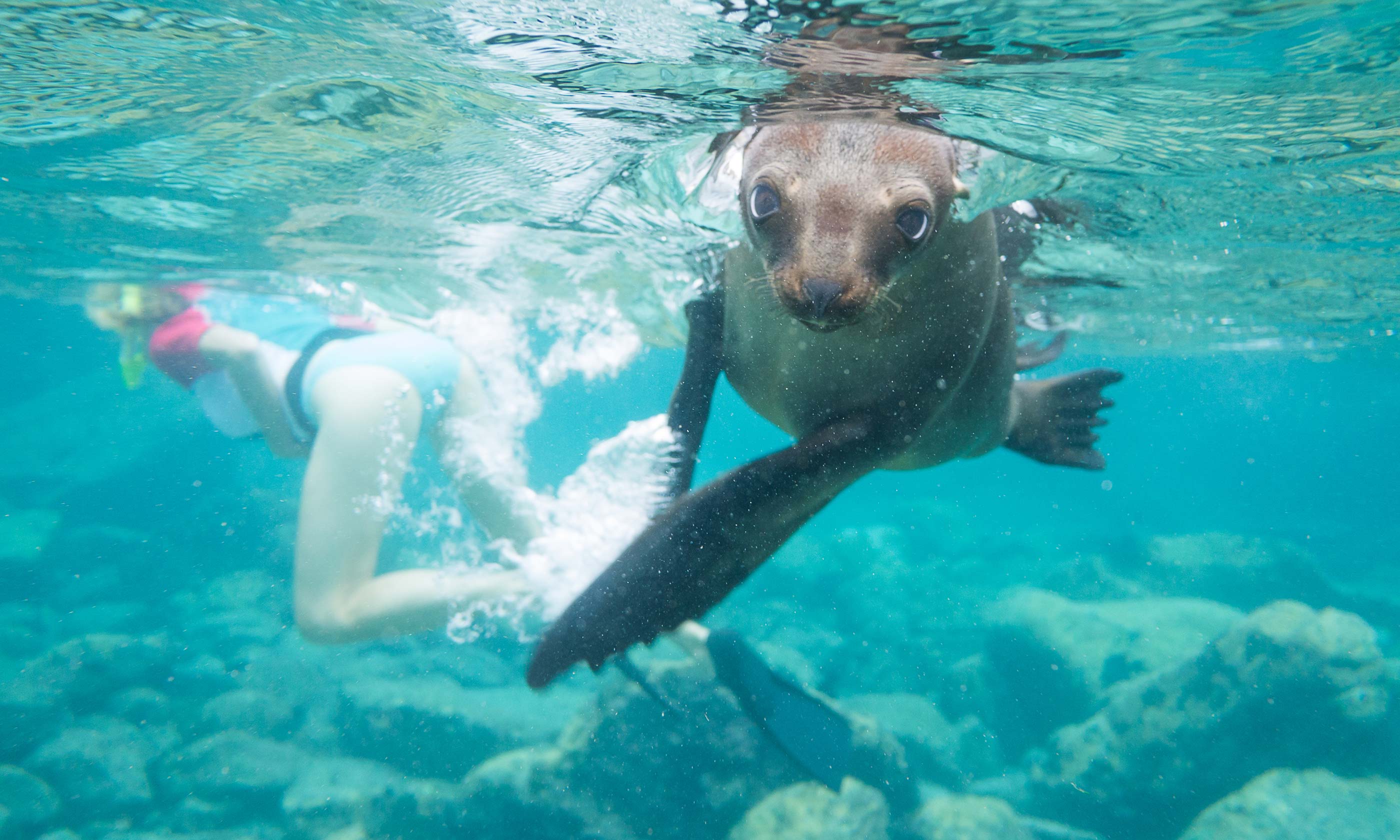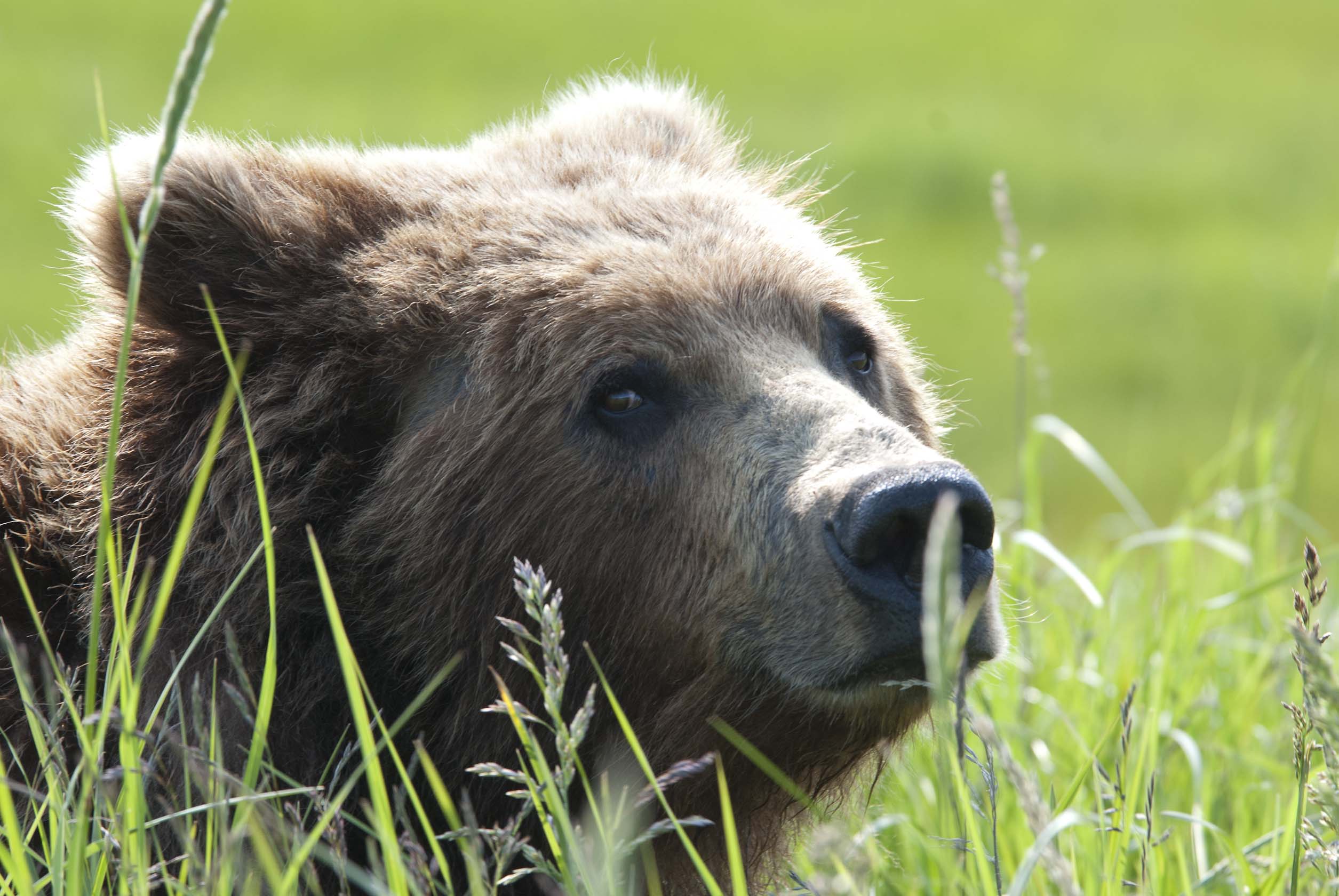
Wildlife-nut Lyn Hughes reveals six spots where you really do get up close and personal with the wildlife
Lyn Hughes
Thanks to nutrient-rich currents and restrictions on fishing, the seas around the Galapagos Islands are packed full of an array of marine life, including manta rays, white-tipped sharks and turtles. Snorkellers can watch marine iguanas graze on algae, and swim alongside tiny penguins (yes, on the equator!). But it’s the playful sea lions that most snorkellers fall in love with.
On land too, the wildlife haven’t been told to fear humans, and so go about their everyday business of courting, breeding and feeding as if you weren’t there. You find yourself having to step over marine iguanas basking in the sun on the trails that humans are asked to stick to, while those cheeky sea lions have right of way on the jetties, steps and seating of the harbours.
Read more:
You look at them. And they look back at you. And that is the moment when you realise just how close we are to the great apes.
No pain, no gain, is an old maxim that can be applied to gorilla tracking. It's hard work to get up boggy, slippery slopes to see them, often in the rain. But that is all forgotten when you get to spend your precious hour watching a gorilla family.
There are only about 800 mountain gorillas left in the wild, which adds another frisson to the experience. But don't overlook the other species of gorillas; if you're lucky you may get to see western lowland gorillas in Gabon or Congo, while there are habituated eastern lowland gorillas in DRC.
Read more:
“Keep a distance of five metres from the penguins,” you’ll be instructed on a southern ocean cruise. But on the beaches of South Georgia, no-one has told the penguins that.
At the beautiful expanse of Salisbury Plain, you’ll be stunned by the sight of over 100,000 king penguins, the second-largest species of penguin. Sit down and curious youngsters will often come up to you, while all around you, the more blasé adults go about their tasks as if you don’t exist.
Read more:
Walking safaris were pioneered in South Luangwa, and this still one of the best places in Africa to explore on foot. This national park is huge, and the numbers of visitors are still relatively low, so it is possible to go all day without seeing another soul.
Walking is a completely different experience to being in a vehicle, as your senses are acutely aware of every rustle of a bush, and you spot tiny details – and tiny critters – that you would bypass if driving. While your guide and armed ranger will try to keep you a healthy distance from the big stuff, you can find yourself inadvertently rubbing shoulders with all sorts of big beasties. I've walked past a pride of lion (keeping my eyes fixed ahead!), startled two male lions as we descended a gully, and seen a leopard rolling on a path just yards ahead. Sheer hairs-on-the-back-of-your-neck-standup magic!
Read more:
 Showered by a brown bear – Hallo Bay Bear Camp, Alaska
Showered by a brown bear – Hallo Bay Bear Camp, Alaska“If I say sit, we sit!” So warns award-winning guide Simyra Taback-Hlebechuk when she briefs clients on safety around the huge coastal brown bears of Hallo Bay. Situated in beautiful Katmai National Park (think volcanoes, mountains, flower-strewn meadows, and white-sand beaches), the bears spend their summers stuffing themselves on salmon, trout, clams and grasses, and can weigh as much as 1,100lbs.
Despite the fierce reputation of 'grizzlies' (as brown bears are often called, especially in the interior), Simyra and her colleagues have learned to coexist with the giants, and the bears often come thrillingly close. So close that I got sprayed with river water when a large female shook herself when exiting from a stream!
Read more:
You know the score with whale watching. You’re never guaranteed a viewing. And when you do seem them, it is usually just a tiny portion of their giant body that is visible above the whales. Yes, it’s still an amazing and humbling experience, but it ultimately leaves you wanting more.
But whale-watching doesn't have to be like that. There's a magical land, called San Ignacio lagoon in Baja California, where, despite the grey whales being nearly wiped out by whalers last century, the whales have forgiven humans. And not just forgiven us, but they want to be our friends. No-one can quite explain why, but many of the whales here will approach boats, and invite you to stroke and tickle them, and even kiss them.
Read more: See Wanderlust July/August 2014!
Main image: sea lion from Shutterstock